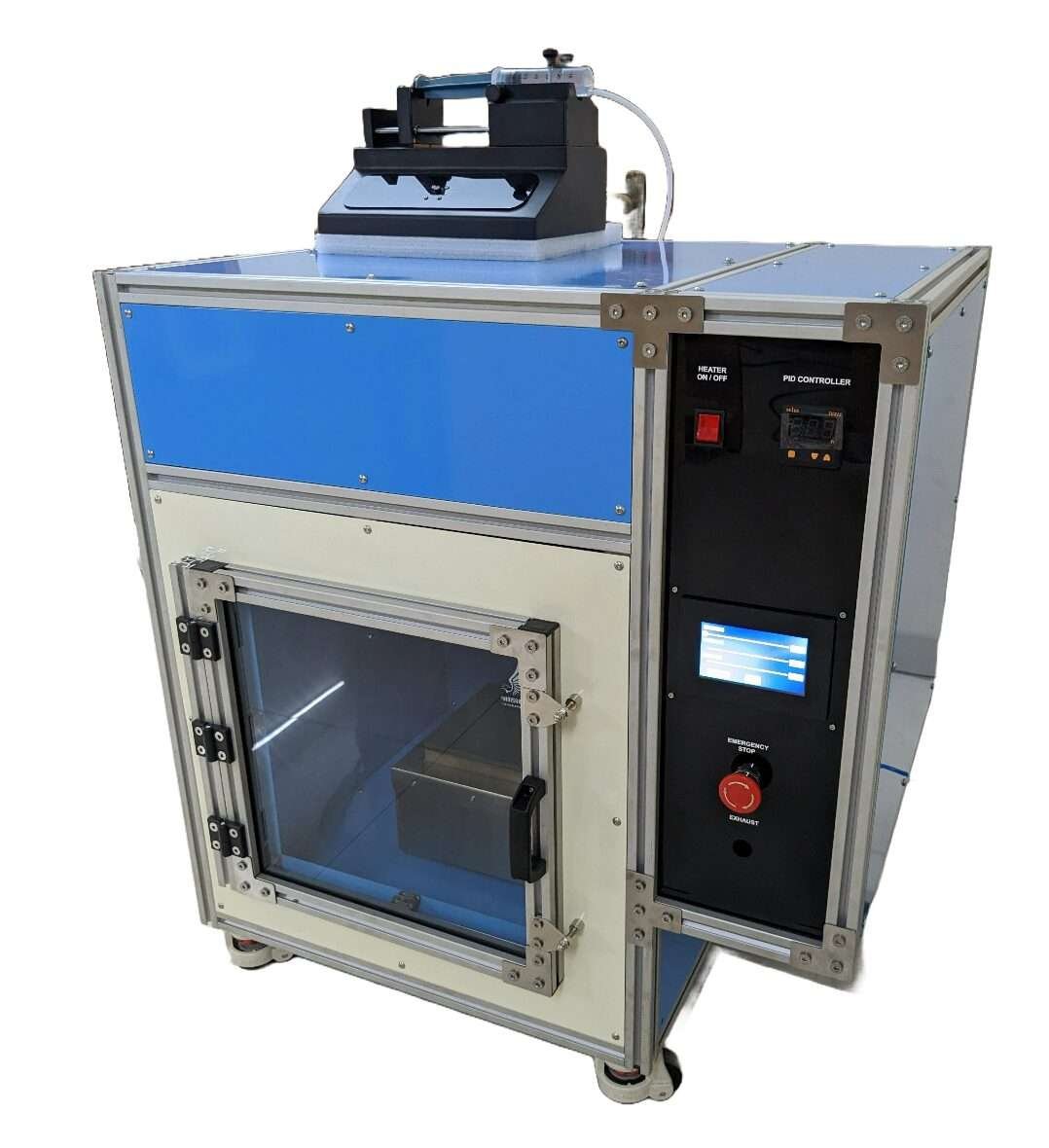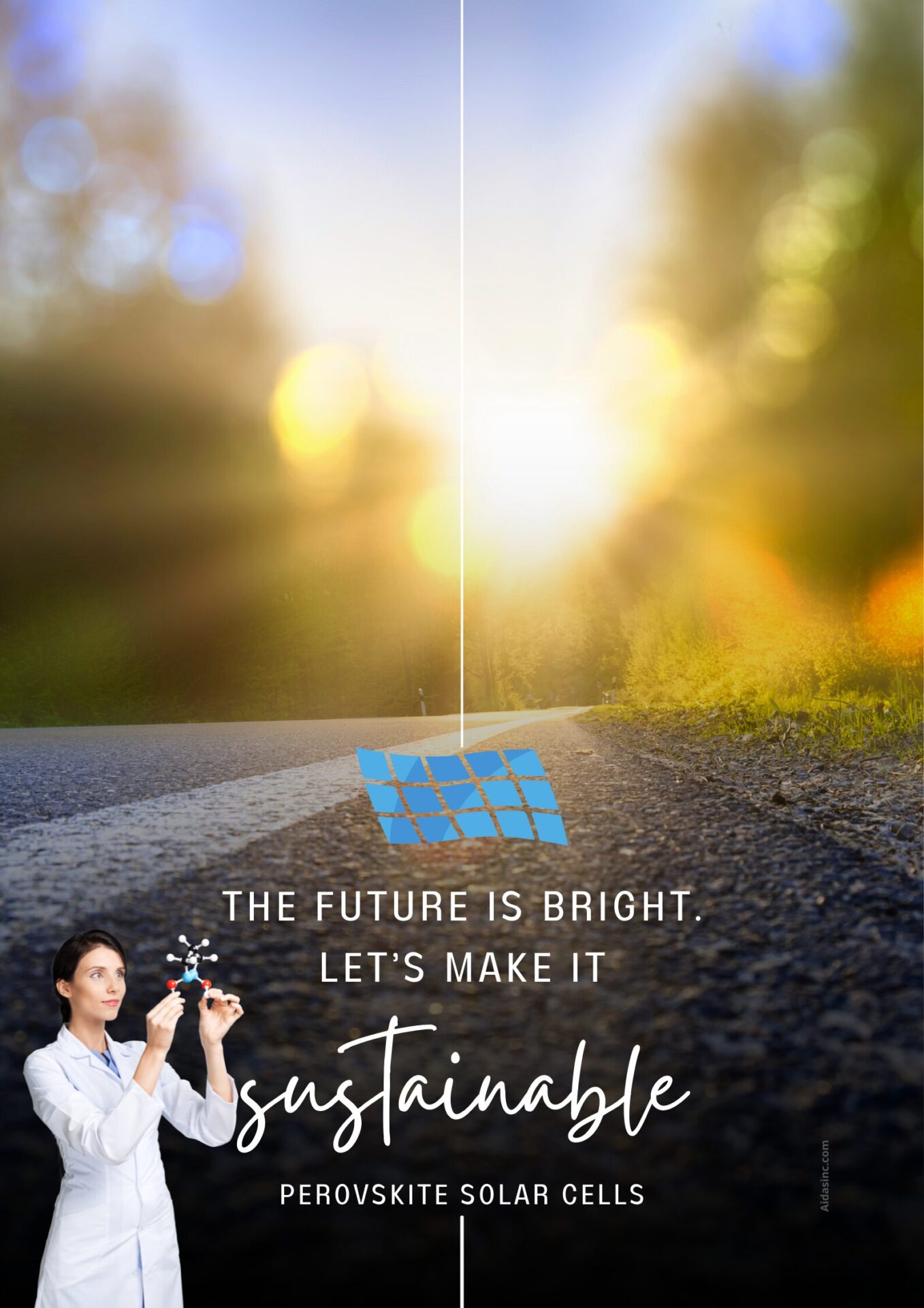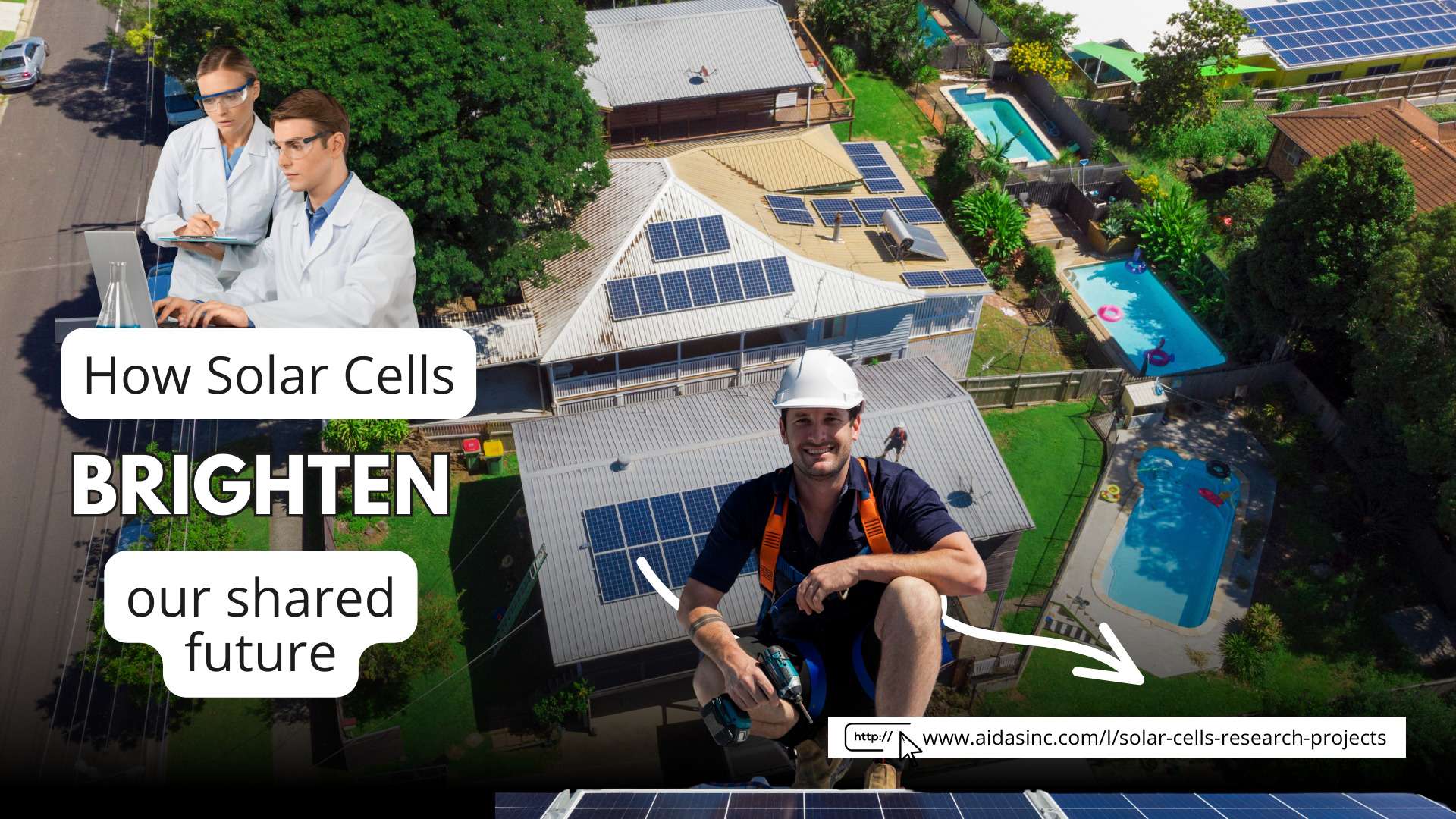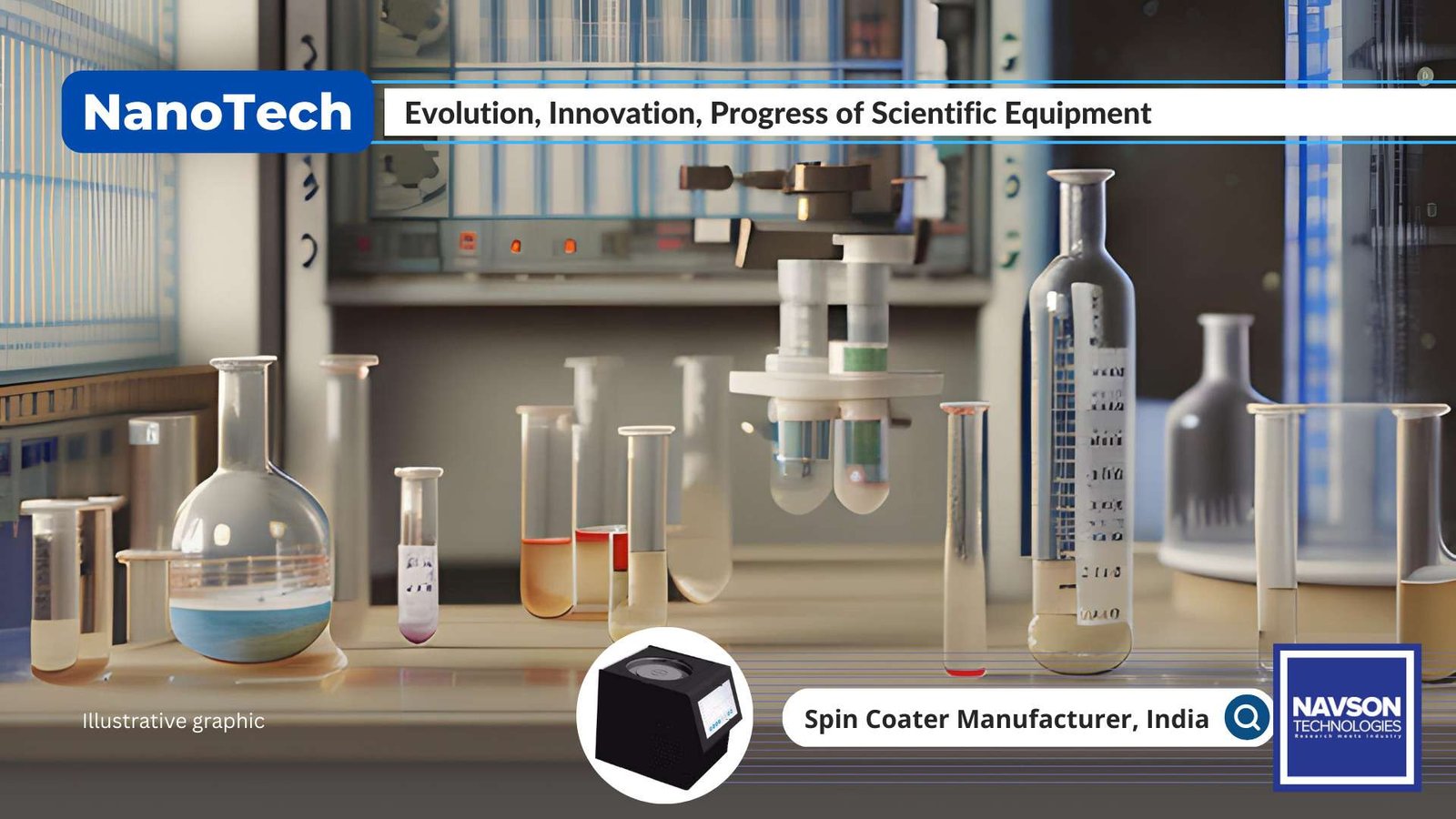Accelerating Research on Perovskite Solar Cells
with Cost-Effective Spray Pyrolysis Equipment.
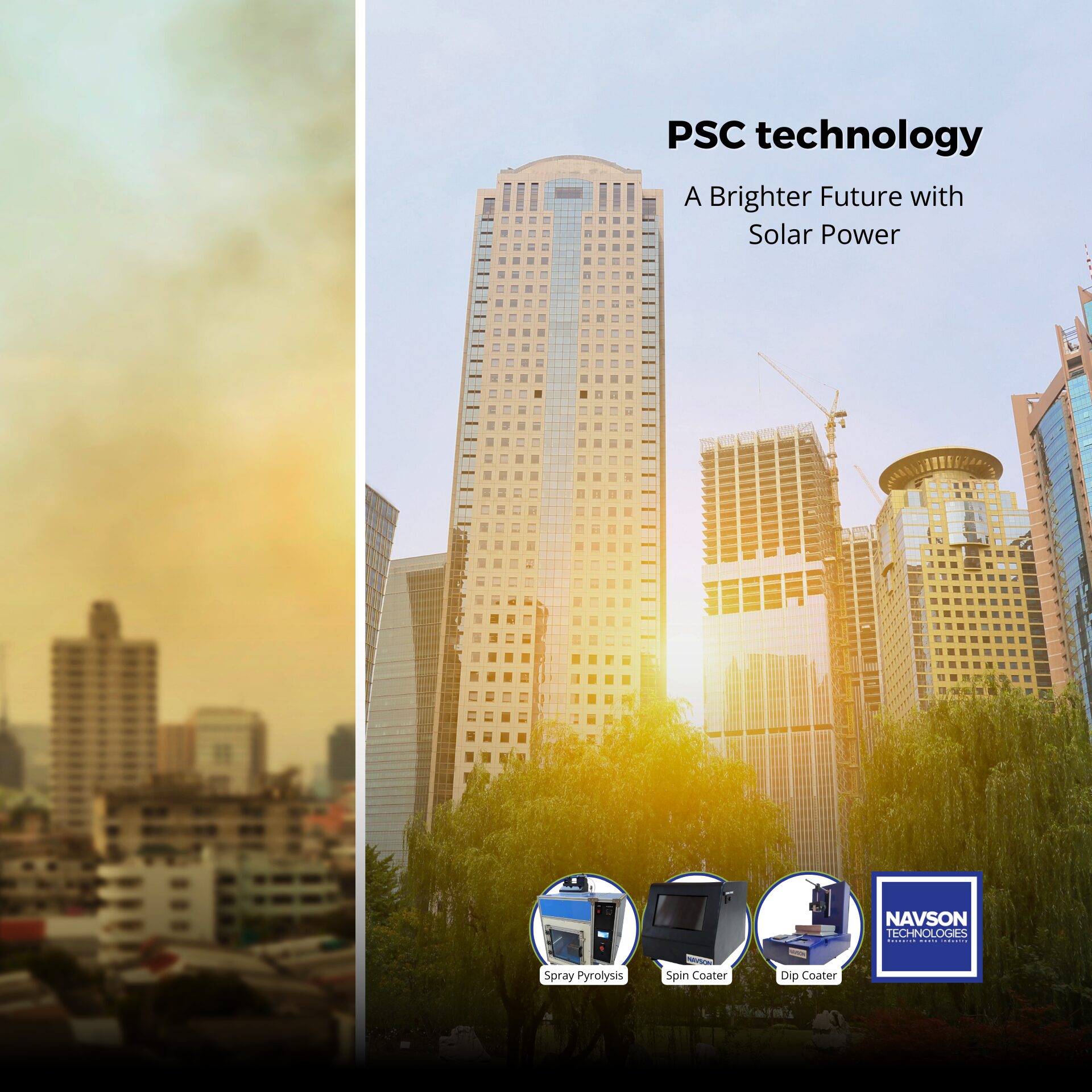
Imagine a future powered by clean energy, where sunbeams are harnessed to meet our needs, where perovskite solar cells (PSCs) are used to make this dream work! This dream can soon become a widely used reality as these next-generation solar cells are like super athletes in the energy world. PSCs can be used to convert sunlight into electricity just as efficiently, or even better, than our traditional silicon-based cells, but that’s not the most exciting part. Here’s the real game-changer, for research scientists have identified how PSCs have the potential to be much cheaper to produce.
Think about it – your research lab uses simpler processes and solutions instead of expensive vacuums, and this helps open the door for large-scale, affordable manufacturing, making clean energy accessible to everyone! Amazing, isn’t it? But it’s not all sunshine and rainbows yet, because scaling up production and ensuring these cells last a long time under real-world conditions has a number of hurdles that the scientific world needs to overcome. However, rest assured, our smart and diligent researchers are on the mission!
In this post, I will explore a promising solution: spray pyrolysis, that’s a cost-effective way to fabricate PSCs, helping scientific labs address scalability challenges and accelerate the path towards a brighter, cleaner energy future.
Spray Pyrolysis for PSCs
Imagine a world where solar panels are not only cheap, but efficient, and can be easily manufactured too! Here our PSCs, with their incredible potential, hold that big promise for mankind, but there’s a hurdle. How to scale them up from lab experiments to real-world applications? Here, our modern spray pyrolysis equipment come to help, giving the research world a technique that is as exciting as it is simple.
Picture this: you have got that special solution that contains all the ingredients to fabricate a perovskite film, right? Using SPE, this ink gets turned into a fine mist, like a super cool fog that you blast as mist with an inert gas towards a hot surface. The magic happens when the tiny droplets hit the heat and they rapidly transform, like tiny chefs whipping up the perfect perovskite films right on the spot! Sounds cool, isn’t it? So here’s why the industry has labeled this spray pyrolysis technique a game-changer:
- It’s Simple, so you need no fancy equipment, just one that creates the required mist and that hot surface! You can easily adjust the parameters like precursor concentration, spray rate, and substrate temperature, thus benefiting from the flexibility and control over the film properties. This allows you to gain rapid optimization of the perovskite film for efficient PSC fabrication.
- It’s affordable, and now you can forget the expensive vacuum chambers, thus making spray pyrolysis process budget-friendly for researchers everywhere. The equipment is significantly cheaper and doesn’t require the elaborate infrastructure required for other deposition techniques, thus slashing your upfront investment cost for PSC fabrication!
- It’s scalable, and unlike other thin film deposition methods that are limited to tiny areas, your spray pyrolysis equipment can coat large surfaces, paving the way for mass production.
- It’s versatile, so you can adapt it to coat various substrates, including flexible ones! Imagine how this can open the doors for the development of new types of Perovskite Solar Cells that are suitable for integration into diverse applications, such as roll-to-roll photovoltaics for building integration.
Perovskite Solar Cell Fabrication Challenges:
Hold on! All of the above on spray pyrolysis process sounds like a game-changer, right? But there’s always a twist in the scientific journey, isn’t it? So here’s the challenge, while SP offers a fantastic way to make these next-generation solar cells, the scientific community still needs to iron out a few wrinkles like, getting perfectly smooth and flawless thin films. Don’t worry, though, we know our smart researchers are on the case, and will tackle these challenges head-on! For now, let’s focus on the exciting possibilities this technique unlocks.
Best Practices for Perovskite Deposition with Spray Pyrolysis
Ask we discussed earlier, these perovskite solar cells (PSCs) promise to revolutionize the field, and using spray pyrolysis technique you have a potential game-changer. But how do you unlock its full potential for crafting high-quality perovskite films, the heart of new solar cells?
The answer lies in a meticulous dance of several factors, so here’s a dive into the key ingredients that make for perfect perovskite films using spray pyrolysis.
1. The Precursor Solutions:
You are on a quest to create the ultimate solar cell material, a light-harvesting wonder, but you need the perfect recipe. That’s where the precursor solution comes in, the foundation of your perovskite story.
First, there’s concentration, if you have too-diluted a solution you will get a thin film that’s unable to capture enough sunlight. Conversely, an overly concentrated solution will create a clunky film with imperfections – so finding the perfect balance is your key.
Next, you have stoichiometry, the balance of ingredients, like having the right mix of powers, in other words, that exact ratio of components to form the desired crystal structure. This crystal structure is crucial for efficient light conversion, and that’s the ultimate goal of your solar cells, isn’t it?
Now, it’s time for the solvent that needs to dissolve all the perovskite components readily. So it needs to be reliable, it should be volatile, easily evaporating during the process, and not decompose prematurely during the spraying.
Finally, you have the additives, these tiny participants that can influence crystal growth, making your thin film more uniform. They can even “passivate” surface defects, acting like shields against energy loss, hence having the right additives can make your perovskite truly shine!
As you will see, your precursor solution is more than just a mix of chemicals; it’s the foundation for crafting the perfect perovskite cell that’s ready to conquer the challenge of clean energy!
2. Choice of Substrates:
Before you lay the foundation of the perovskite film, you need the perfect ground to build it on – and that’s where the substrate comes to work. So a bumpy, uneven surface won’t hold your perovskite film very well, hence this requires your special treatment, like smoothing it out, to make sure the perovskite film sticks strongly and grows evenly.
Now, the type of ground you choose also matters, so sturdy materials like glass or a special kind of glass called fluorine-doped tin oxide (FTO) can be considered. These are like the solid rock foundations for your thin films, but if you want to make a flexible film, then you might use a flexible plastic or polymer base. Cool, right?
3. Deposition Parameters:
The substrate temperature you create acts like a stage where the magic happens, so it must be hot enough for the precursor solution droplets to decompose completely, transforming them into the desired perovskite film. However, if it’s too much heat, the results can be disastrous, leading to unwanted byproducts or even creating film defects. Thus finding the optimal temperature is crucial for a successful film formation.
The size of the droplets also plays a starring role in the uniformity of the film you want to fabricate. Smaller droplets, can gracefully arrange themselves into a smooth and even layer, minimizing imperfections like pinholes. But creating these miniature droplets requires careful control of the spraying process, just like meticulously planning their movements.
Then there’s the carrier gas that acts like a gentle breeze, guiding the droplets onto the substrate. Here maintaining a proper flow rate ensures the droplets land evenly across the entire stage, preventing unwanted splashes or patchy areas. So you need to control the gas flow, like a well-coordinated performance, that leads to a uniform and high-quality film.
4. Controlling Film Morphology and Crystal Structure:
How these crystals are arranged, and how perfect they are, significantly impacts how well the cells your fabricate converts sunlight into electricity. Here’s the toolbox:
- Post-deposition annealing: Think of it as putting the film in a warm oven where the gentle heat helps the tiny crystals grow bigger and more orderly, like snowflakes forming beautiful patterns.
- Solvent annealing: This is where things get interesting as you expose the film to a special solvent vapor, that can nudge the crystals into a preferred orientation, optimizing how they capture sunlight.
- Single-step vs. two-step deposition: So you can either create the perovskite solar film in one go or break it down into two steps, and each approach has its pros and cons. Where the two-step method offers more control over crystal formation, but it requires some extra effort.
By carefully choosing and combining these techniques, researchers like yourself can craft the perfect perovskite solar films with the ideal crystal structure and morphology.
But the story doesn’t end here, as spray pyrolysis unlocks even more possibilities, like the creation of advanced “tandem” solar cells, that stack different materials to capture more sunlight than ever before. And this paves the way for even more efficient solar energy conversion, holding a bright future, where more innovative techniques can create a world powered by clean, affordable, and accessible solar energy.
Let’s join the quest and turn this exciting story into reality!
The Joyful Lifestyle Scribe
Hey there! I’m Geeta, a wordsmith of sorts who loves to read, write, and share all things about sustainable living. Aside from a career as a content specialist, I like to weave tales about embracing a healthier, happier lifestyle. My pen dances to the rhythm of eco-friendly choices that you would assumingly like too, and the joy of living well. Let’s explore the journey to a greener, more fulfilling life together!

Disclaimer: Content on this site is provided for general informational purposes only and is not a substitute for professional advice. It’s not a substitute for professional advice. So, before making any big decisions, always consult with the experts in the specific field. We’re here to spark curiosity and inspire, but your best bet is to get personalized guidance for your unique situation. Stay awesome and informed!
